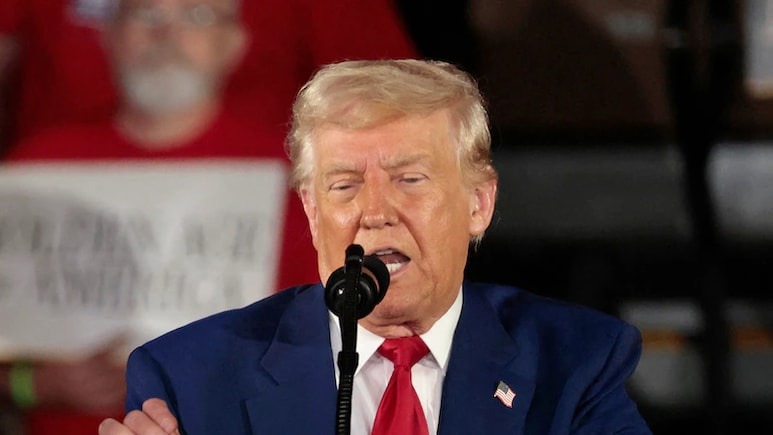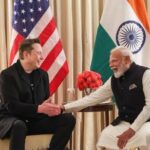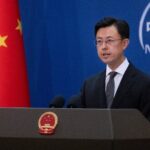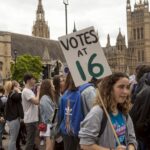Introduction: A New Chapter in U.S. Trade Diplomacy
On May 1, 2025, former President Donald Trump made headlines by announcing that the United States is nearing completion of trade agreements with Japan, South Korea, and India, which could be finalized within a couple of weeks. These declarations came during a nationally televised town hall where Trump outlined a bold vision for U.S. trade relations. While still unofficial, his statements suggest a new era of American economic diplomacy, with the administration seemingly prioritizing strategic partnerships in Asia amid rising global tensions and economic uncertainty.
This development marks a significant shift in the global trade landscape. With China’s influence growing and global markets becoming increasingly complex, the U.S. appears to be recalibrating its foreign trade priorities. Trump’s remarks were not only aimed at reassuring American businesses and allies but also intended to signal a reassertion of American leverage in international trade.
The ‘Catbird Seat’ Strategy: Trump’s Negotiation Tactics
Trump emphasized during his address that while these trade deals are progressing, there is no urgent need to finalize them. He insisted the United States currently occupies what he called the “catbird seat”—a position of advantage in negotiations. He claimed this leverage stems from the tariffs previously imposed during his first term, which remain in place or have even expanded under his renewed trade agenda.
Trump’s strategic philosophy appears to center around patience and pressure. Rather than rushing to conclude deals, he seems content allowing negotiations to simmer while U.S. tariffs generate revenue and exert economic pressure on partner nations. According to Trump, this calculated restraint has placed the U.S. in a powerful position where other nations are more eager for trade access than the U.S. is to offer it. It’s a stance that echoes his broader “America First” doctrine, reimagined for a new geopolitical climate.
This strategy, however, comes with risks. While it may yield short-term concessions, it could also provoke retaliation or delay much-needed economic cooperation. Yet, Trump remains confident that the U.S. economy will benefit long-term if these negotiations are played strategically rather than hastily.
India: Navigating Complex Trade Dynamics
India, with its fast-growing economy and strategic geopolitical relevance, has long been an important partner for the United States. Recent months have seen a flurry of diplomatic exchanges between Washington and New Delhi. Though official details remain sparse, there is strong speculation that India is among the three countries closest to sealing a new trade pact with the U.S.
Commerce Secretary Howard Lutnick recently mentioned that one of the trade deals has already been finalized and is awaiting approval from the counterpart nation’s parliament and prime minister. While he did not name the country, administration insiders suggest that it is indeed India.
Treasury Secretary Scott Bessent has also signaled that a deal with India may be among the first to materialize. These developments follow an important visit by Vice President Vance to India, during which he met Prime Minister Narendra Modi. The two reportedly made significant progress in resolving trade tensions that have lingered for years.
Of particular concern has been a proposed 26% tariff on Indian imports set to take effect in July. Reports suggest the recent negotiations were aimed at avoiding these tariffs through mutual compromise. Trump’s administration has also employed a “strategic uncertainty” approach, deliberately withholding full details to maintain bargaining power until agreements are formalized.
India is expected to gain concessions in areas like technology access, agricultural exports, and labor mobility, while the U.S. is looking to enhance market access for American companies, enforce stricter intellectual property protections, and rebalance the trade deficit. If successful, this deal could significantly elevate U.S.-India economic ties in both scale and substance.
South Korea: Revisiting the KORUS Agreement
South Korea, another key U.S. ally in Asia, has had a complicated trade relationship with Washington, particularly under Trump’s leadership. The United States–Korea Free Trade Agreement (KORUS), originally intended to deepen bilateral economic ties, has come under renewed scrutiny.
Earlier this year, Trump expressed dissatisfaction with what he termed an “unbalanced” agreement. He pointed out that South Korea’s average tariff on U.S. goods is substantially higher than the reciprocal U.S. tariffs. Furthermore, he highlighted the substantial U.S. military presence in South Korea as another reason for seeking more favorable economic terms.
In response to these grievances, the Trump administration implemented a 25% tariff on a wide range of South Korean imports in April 2025. This move was widely viewed as a negotiating tactic, designed to bring South Korea back to the bargaining table.
Seoul responded by requesting exemptions and arguing that the existing free trade agreement already allows for low or zero tariffs on most goods. South Korea emphasized its support for U.S. interests in areas such as military cooperation, climate initiatives, and semiconductor manufacturing.
The potential trade deal aims to revise the existing KORUS framework, updating provisions related to digital trade, energy exports, intellectual property, and labor rights. Both countries appear motivated to strike a deal—South Korea to protect its industries and exports, and the U.S. to secure a more equitable balance of trade.
Japan: Addressing Trade and Currency Imbalances
The U.S.-Japan relationship, while longstanding and deeply intertwined, has also seen its share of economic friction. Trump has repeatedly criticized what he views as Japan’s currency manipulation, arguing that the Japanese yen has been deliberately weakened to favor Japanese exporters.
These accusations came amid broader concerns over Japan’s trade surplus with the United States. Trump has framed the relationship as lopsided, particularly in the auto and electronics sectors, and has suggested that tariffs may be necessary to correct these imbalances.
Earlier this year, Trump reignited controversy by questioning the U.S.-Japan Security Treaty, arguing that it disproportionately benefits Japan at America’s expense. Such statements have unsettled Japanese officials and signaled that trade would not be the only issue on the negotiation table.
However, discussions between the two countries have progressed. U.S. Trade Representative Jamieson Greer confirmed that negotiations with Japan are focused on reducing tariffs, ensuring fair trade practices, and modernizing standards related to digital trade, environmental regulations, and labor protections.
Japanese officials are expected to seek clarity on currency-related concerns and reassurance regarding future U.S. commitments to security cooperation. If a deal is finalized, it would likely reflect a recalibrated partnership based on shared values but more balanced trade terms.
The Broader Picture: Shaping Global Trade Without China
One striking feature of Trump’s new trade posture is the deliberate exclusion of China from current negotiations. Once the United States’ largest trading partner, China has now been targeted with punitive tariffs reaching 145%, effectively freezing any new trade dialogue between the two countries.
This exclusion is part of a broader strategy to realign U.S. trade priorities toward democratic allies and economically like-minded nations. Instead of multilateral deals, the U.S. is pursuing a series of bilateral agreements aimed at reducing dependencies on China and strengthening relationships with regional powers like India, Japan, and South Korea.
Economists are divided on the long-term implications. Some argue that Trump’s unilateral and tariff-heavy approach could isolate the U.S. and trigger trade wars that hurt global economic stability. Others believe that recalibrating trade toward fairer, reciprocal terms is long overdue and could reinvigorate domestic manufacturing and job creation.
Recent U.S. economic data offers a mixed picture. The GDP fell by 0.3% in the first quarter of 2025, driven largely by a surge in imports ahead of anticipated tariffs. While critics attribute the downturn to the uncertainty created by Trump’s trade agenda, administration officials insist it’s a temporary dip that will be offset by long-term gains from fairer trade deals.
In the backdrop of a potential recession, these deals are viewed as crucial to economic stabilization. They represent a pivot away from traditional alliances and strategies, toward a more transactional and national-interest-driven trade policy.
Conclusion: A Strategic Pivot in U.S. Trade Relations
The emerging trade deals with India, South Korea, and Japan reflect a strategic pivot in U.S. economic policy. They mark a transition from multilateralism to targeted bilateralism, from diplomacy to hardball negotiation. While many details remain under wraps, the direction is clear: the United States under Trump is determined to reassert itself as a dominant global trade player—on its own terms.
These potential agreements are more than just economic contracts. They are geopolitical signals, economic safety nets, and, perhaps most importantly, a test of whether Trump’s combative style can deliver durable outcomes in a volatile global economy.
If successful, they could redefine the architecture of Asian trade and secure America’s role in shaping the 21st-century global economy. If not, they could destabilize long-standing alliances and exacerbate global tensions. One thing is certain—the world is watching.





